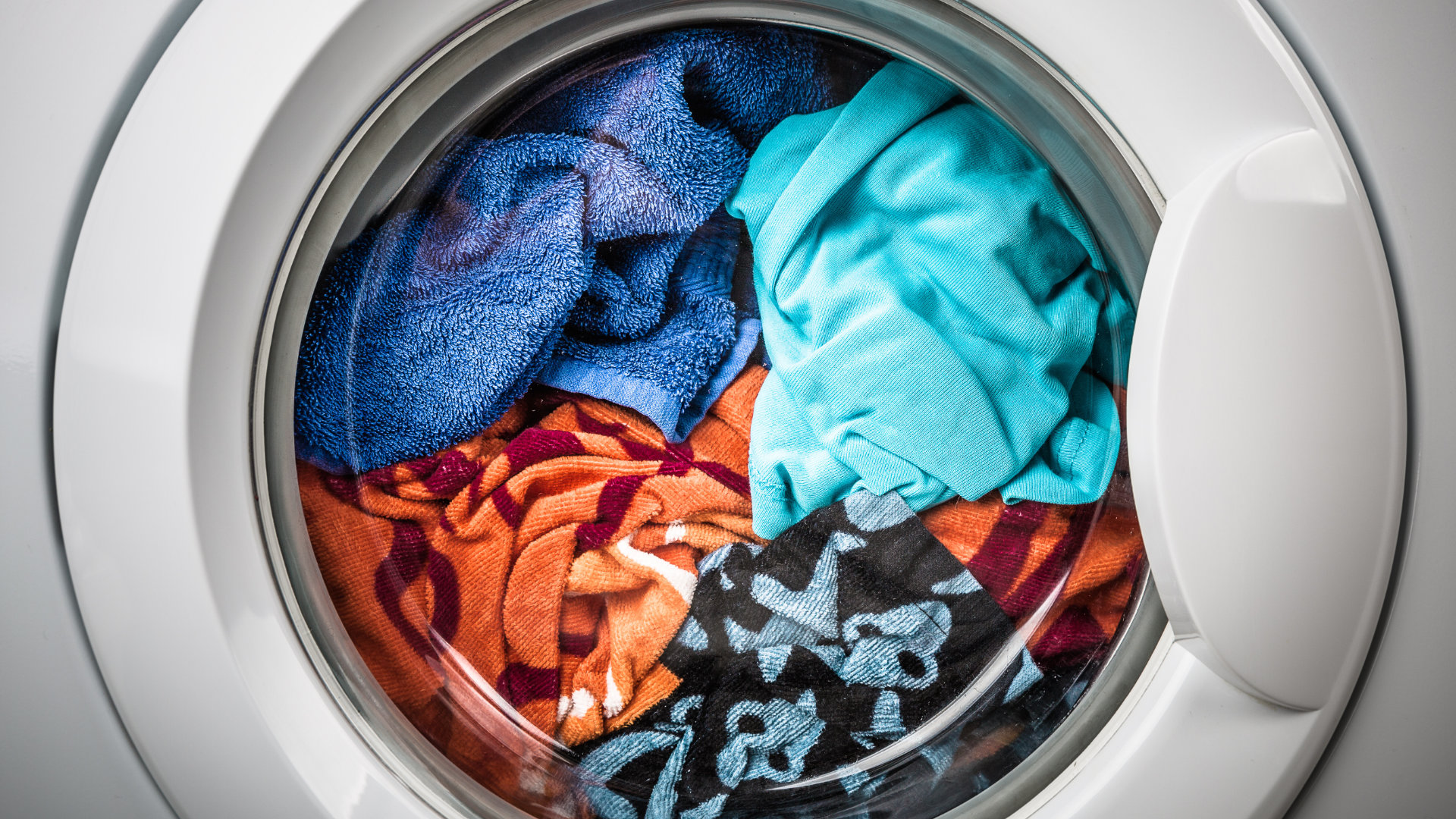
A Samsung washer SC error code means that the washer has a drainage problem or, more specifically, the washer detects that the drain cycle is taking too long. The SC error code is similar to Samsung error codes Nd, 5E, SE, 5C, SC, and 1 5C, which also indicate a drainage problem. Resolving the SC error code is usually as simple as unclogging the drain hose, pump filter, or drain pump. Making sure the drain hose is installed correctly can also resolve the issue.
If you do not have time to fix the error, the error can usually be resolved by disconnecting the power for a minute or two. However, the error code likely indicates an issue that needs to be fixed, and ignoring the error code for too long can lead to worse issues arising in the future.
Caution: Be careful when disconnecting hoses that there is not too much water, as it could suddenly pour out of the washer. It is best to empty the washer by hand if the tub is full before disconnecting any hoses. Make sure to have a large container to collect the water when troubleshooting the SC error code.
This guide applies to most Samsung washers, including the following models:
592-49045
592-49075
592-49082
592-49087
WF203ANSXAX
WF206ANSXAA
WF206ANSXAC
WF206BNWXAC
WF210ANWXAA
WF218ANBXAA
WF218ANWXAA
WF219ANBXAA
WF219ANWXAA
WF220ANWXAA
WF328AAGXAA
WF328AARXAA
WF328AAWXAA
WF330ANWXAA
WF340ANGXAC
WF340ANRXAC
WF350ANWXAA
Clean the Pump Filter (Front-Loader Washers)
Many Samsung front-loader washers have a pump filter or debris filter that can be accessed on the front of the washer. Samsung recommends cleaning the pump at least once a month or after 40 laundry loads. Making sure the pump filter is clean will prevent odors, mold, and mildew, and it will ensure the washer drains correctly.
Follow these steps to clean the pump filter:
- Open the pump filter access panel by pressing on the cover.
- Locate the black rubber drain hose.
- Remove the white drain plug from the hose, and drain the water into a large container. Be prepared for some water to spill. Removing the plug may require some elbow grease, as it forms an airtight seal. Twisting the plug while holding the hose should remove it.
- Depending on the model, either remove the pump filter by turning it counterclockwise and pulling it out or by pushing it in and turning it like a medicine bottle.
- Clean the filter with soap and water. Use a small toothbrush or soft bristle brush to help clean dirt and debris off.
- Return the filter to the washer.
- Replace the hose plug and return the hose to its mounting clip.
- Close the access panel.
Check the Drain Hose
If the washer will not drain, the drain hose may be kinked, pinched, or obstructed by a small object. It is also possible that the drain hose outlet has been submerged in water, which would restrict the washer’s draining ability. If the drain hose cannot be unclogged or connected properly, it will need to be replaced.
The drain hose must also be installed correctly so that water can drain properly. The drain hose may be connected to a spigot on the waste pipe or a waste trap or to a standpipe. If your washer’s drain hose is connected to a standpipe, the drain hose should hook over an open standpipe that is connected to the waste pipe.
If the drain hose is connected to a spigot and the washer has recently been installed, check that the blanking cap has been removed from where the drain hose connects with the washer.
If the drain hose is connected to a standpipe, make sure the drain hose has not been inserted more than 6 inches into the standpipe or sink. The drain hose should also not form an airtight connection. The drain hose should be at least 18 inches high (24 inches for washbasins) and not higher than 96 inches (35 inches for washbasins).
To remove and unclog the drain hose:
- Disconnect the power to the washer.
- Turn off the water supply to the washer.
- Disconnect the drain hose from the washer. On most models, pliers will be needed to release the clamps securing the drain hose to the washer.
- Unblock the drain hose with a drain snake tool, or wash the hose with a mixture of hot water, white vinegar, and baking soda.
- If the drain hose is defective and the issue cannot be fixed, replace the drain hose. If the drain hose has holes or is worn, it is best to replace it rather than try to patch it up.
Check the Drain Pump
If the drain hose is not blocked, a defective drain pump may be causing the issue. A small object, article of clothing, or damaged impeller could be causing the pump to fail mechanically. If the impeller is not damaged and the pump is not being obstructed, it may have failed electrically.
To check the drain pump:
- Disconnect the washer from the power source and disconnect the water supply to the washer.
- On a front-loader washer, remove the rear access panel. For a top-load washer, first secure the lid with tape so that it will not open. Then lay the washer on its front to access the drain pump underneath the washer.
- Disconnect the drain pump wire connector.
- Use pliers to release the clamps that secure the drain hose to the pump. Remove the drain hose.
- Use a 5/16 inch socket to remove the drain pump mounting screws.
- Remove the pump from the washer.
- Check the pump for damage or obstructions.
If the pump does not appear to have any damaged components and is free of obstructions, the pump may have failed electrically. You can use a multimeter to determine if the drain pump motor has continuity (a continuous electrical path). If the motor tests negative for continuity, the pump will need to be replaced.
Other Causes
If checking the filter, drain hose, and drain pump have failed to fix the issue, the pressure switch may be blocked or defective. The pressure switch tells the control board when to drain or add water. If the control board is receiving faulty signals, it may not be draining correctly because it does not think it needs to. The pressure switch can be tested with a multimeter to see if it needs to be replaced or just replaced, as the part is relatively inexpensive.
If the error code continues to appear, the control panel or timer may be defective and causing the error code. These components can be difficult to test with a multimeter and will often require the replacement of the part and/or the assistance of a trained professional. It is also worth checking that the door lock or lid switch is working correctly as well.

Your Guide to Whirlpool Microwave Replacement Parts

What to Do When Your Kenmore Dryer Won’t Start

How to Resolve the LG Washer LE Error Code

Why Does My Oven Smell Like Gas? Causes and What to Do

Maytag Dryer Not Heating? Here’s How to Fix It

6 Common Reasons Your Speed Queen Dryer Isn’t Heating

8 Reasons Your Samsung Refrigerator Is Not Cooling

9 Most Reliable Washer and Dryer Brands

How to Get Ink out of Your Dryer the Easy Way

Why Is My Fridge Making Noise That Stops When the Door Is Open?

Frigidaire Refrigerator Error Code H1: Causes & Solutions

How to Clean a Dryer Vent Without Moving the Dryer

9 Reasons Your LG Refrigerator Isn’t Cooling

LG Refrigerator Not Making Ice? Here’s What To Do!


